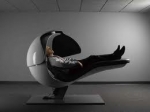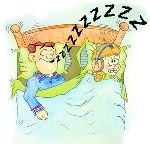How are you using the Sleepyhead data + other data sources?
- Chuck Connors
- Posts: 257
- Joined: Fri Apr 20, 2012 7:55 am
How are you using the Sleepyhead data + other data sources?
I recently discovered this site and find it interesting. I'm interested in learning more about how people are using the data from Sleepyhead and other software programs available to read the data from the CPAP card. Is the information from the graphs and charts just interesting to look at or is this information useful for actionable items on your part? How are you using the information gleaned from the report? Thank you.
-
John_Jason
- Posts: 55
- Joined: Sun Apr 08, 2012 12:07 am
- Location: USA 97217
Re: How are you using the Sleepyhead data + other data sources?
I'm not using it as much as I might due to failure to understand the meaning of all the terminology. The way I look at it, the AHI is the most important figure. And if it is too high, the other graphs can help me figure out why. However, figuring them all out is not trivial.
Re: How are you using the Sleepyhead data + other data sources?
The information we get from our charts is very usefull. You can tell if your therapy is working properly or not...lets say you have a non-data machine and your pressure is set at 10, but even after 2 - 3 months of use you still feel terrible...do you know what to do, do you know if your pressure is correct, do you know if you are still having hypops or ca's or centrals, do you know if you are having leaks and the pressure is doing you no good????????? See what I mean, with data you can check all of these things out and get optimum therapy directed right at you...you can see the results and fix what you need to fix. Hope this helped you. If you do alot of reading here you will see how we help each other out with the correct answers to our therapy questions, no matter what they are.
A note to John_Jason...if you have a question regarding your graphs..just ask, and if you type into the search field above in the blue banner, that will give you more answers than you need .
Welcome to you both and hope you get good sleep soon.
A note to John_Jason...if you have a question regarding your graphs..just ask, and if you type into the search field above in the blue banner, that will give you more answers than you need .
Welcome to you both and hope you get good sleep soon.
_________________
| Machine: ResMed AirSense™ 10 AutoSet™ CPAP Machine with HumidAir™ Heated Humidifier |
| Mask: AirFit™ P10 Nasal Pillow CPAP Mask with Headgear |
Started cpap in 2010.. still at it with great results.
Re: How are you using the Sleepyhead data + other data sources?
When I first started therapy almost 3 years ago...I felt like total crap after sleeping with the mask.
It took me a couple of weeks to get the software because I bought it from cpap.com and had to save up a bit of $...Once I got the software it was easy to see that my AHI was higher than we would like to see at around 10 AHI (though much lower than precap at 53per hour. My prescribed pressure was 8 cm but 8 cm wasn't quite enough. Titration study was an all nighter but I only slept 156 minutes and only 6 minutes in REM where my OSA is much worse. So the titration study didn't fight my really bad events...
Ended up needing 10 cm minimum and 20 maximum (some events needed 18 cm or so) and with those settings my AHI dropped below 3 and I started feeling some improvement in a few areas..
I don't normally watch my data now every day. It doesn't change much and is rather boring but I have been doing some various experiments with a new machine, new masks, new comfort features so I am watching the data to help me evaluate how those items might be affecting things.
For me the only data that I really care much about are the event graphs, the flow rate graph, the pressure graph since I use auto adjusting pressure and it will vary, and the leak graph...I look to see if I had significant leaks or not...especially since I am evaluating a new mask and new comfort items (strap covers and Bella loop covers).
So sometimes watching the data is used to solve potential problems with therapy.
Sometimes it is used to evaluate experiments with new stuffl
And sometimes used just to validate things. We like to see that we did good and give ourself a pat on the back...We use it similar to a diabetic using a glucometer to check blood sugar levels. So validation or a means to evaluate a potential need for a change in something.
It took me a couple of weeks to get the software because I bought it from cpap.com and had to save up a bit of $...Once I got the software it was easy to see that my AHI was higher than we would like to see at around 10 AHI (though much lower than precap at 53per hour. My prescribed pressure was 8 cm but 8 cm wasn't quite enough. Titration study was an all nighter but I only slept 156 minutes and only 6 minutes in REM where my OSA is much worse. So the titration study didn't fight my really bad events...
Ended up needing 10 cm minimum and 20 maximum (some events needed 18 cm or so) and with those settings my AHI dropped below 3 and I started feeling some improvement in a few areas..
I don't normally watch my data now every day. It doesn't change much and is rather boring but I have been doing some various experiments with a new machine, new masks, new comfort features so I am watching the data to help me evaluate how those items might be affecting things.
For me the only data that I really care much about are the event graphs, the flow rate graph, the pressure graph since I use auto adjusting pressure and it will vary, and the leak graph...I look to see if I had significant leaks or not...especially since I am evaluating a new mask and new comfort items (strap covers and Bella loop covers).
So sometimes watching the data is used to solve potential problems with therapy.
Sometimes it is used to evaluate experiments with new stuffl
And sometimes used just to validate things. We like to see that we did good and give ourself a pat on the back...We use it similar to a diabetic using a glucometer to check blood sugar levels. So validation or a means to evaluate a potential need for a change in something.
_________________
| Machine: AirCurve™ 10 VAuto BiLevel Machine with HumidAir™ Heated Humidifier |
| Additional Comments: Mask Bleep Eclipse https://bleepsleep.com/the-eclipse/ |
I may have to RISE but I refuse to SHINE.
- Chuck Connors
- Posts: 257
- Joined: Fri Apr 20, 2012 7:55 am
Re: How are you using the Sleepyhead data + other data sources?
Nanwilson, thank you for your response. Can you please help me understand something? If the pressure is incorrect, how do you change it? If your mask is having leaks, how do you fix that? I'm not sure what you mean by "get optimum therapy directed right at you." Can you please explain? -Chuck-
- snuginarug
- Posts: 676
- Joined: Sun Aug 01, 2010 9:35 pm
Re: How are you using the Sleepyhead data + other data sources?
Welcome Chuck!
I am glad you found your way here. It's good you are interested in learning about your therapy. This is a great place to get answers!
You will find many new and strange terms being bandied about. This link: viewtopic/t35702/Where-A-CPAP-Newbie-Should-Start.html will bring you to a great resource for newbies (and older members too!). In addition, there is a big yellow lightbulb in the top right corner of the main page, which is the CPAP Wiki. You can find lots of answers there. What you can't find by searching and browsing and poking around, you can ask here.
Personally, I use my SleepyHead data to routinely check my nightly average AHI in the overview chart. Then, when I change anything (mask, pressure, mode, etc.) I can refer to the detailed daily reports to see what exactly is going on.This helped me adjust things to get my new full face mask (FFM) working effectively. I was audacious and changed my pressure on my own. This is frowned upon by doctors, indeed forbidden by most. A patient does not receive the clinician's manual that explains how to change pressure. However, a clinician's manual can be obtained. I changed my pressure a small amount after being here over a year and having thoroughly familiarized myself with reading my data. Some people are real DIY types, some people would never touch a setting without express approval of their doctor. It is individual.
Good luck finding your answers and starting this crazy adventure called CPAP.
I am glad you found your way here. It's good you are interested in learning about your therapy. This is a great place to get answers!
You will find many new and strange terms being bandied about. This link: viewtopic/t35702/Where-A-CPAP-Newbie-Should-Start.html will bring you to a great resource for newbies (and older members too!). In addition, there is a big yellow lightbulb in the top right corner of the main page, which is the CPAP Wiki. You can find lots of answers there. What you can't find by searching and browsing and poking around, you can ask here.
Personally, I use my SleepyHead data to routinely check my nightly average AHI in the overview chart. Then, when I change anything (mask, pressure, mode, etc.) I can refer to the detailed daily reports to see what exactly is going on.This helped me adjust things to get my new full face mask (FFM) working effectively. I was audacious and changed my pressure on my own. This is frowned upon by doctors, indeed forbidden by most. A patient does not receive the clinician's manual that explains how to change pressure. However, a clinician's manual can be obtained. I changed my pressure a small amount after being here over a year and having thoroughly familiarized myself with reading my data. Some people are real DIY types, some people would never touch a setting without express approval of their doctor. It is individual.
Good luck finding your answers and starting this crazy adventure called CPAP.
- snuginarug
- Posts: 676
- Joined: Sun Aug 01, 2010 9:35 pm
Re: How are you using the Sleepyhead data + other data sources?
BTW, filling out your equipment section in your profile will better enable us to help you. The top left of the main page has a "User Control Panel" button. Use this to go to your profile tab. Under this tab you can access "edit equipment."
Re: How are you using the Sleepyhead data + other data sources?
MorningChuck Connors wrote:Nanwilson, thank you for your response. Can you please help me understand something? If the pressure is incorrect, how do you change it? If your mask is having leaks, how do you fix that? I'm not sure what you mean by "get optimum therapy directed right at you." Can you please explain? -Chuck-
If your pressure is incorrect, you can change it up or down..........you need to tell us what equipment you are using so that we can tell you how to do that...or you can go to apneaboard.com and download a copy of the clinicians instructions for your machine. A word of warning though, do NOT adjust your pressure willy nilly or a large change at a time. Take a look at your sleepyhead or which ever data you are using and see what your 90 percent pressure is, then you can set it at usually a couple of points lower and a couple higher. For example, my 90% is 11, so I have my machine set at 10 to 15, I do go up to 12 for maybe 10 - 15 minutes a night and once in awhile I will go up to 13 but only for a minute or two while it is chaseing an apnea. If your mask is leaking you need to address that as your therapy is going out the mask and not into YOU. Our mask is the hardest part of this therapy to get right, I went through a number of masks before I found the right one. Do a search for mask fixes and you will see how we keep the leaks to a minimum. By "get optimum therapy directed right at you"...I should have said "right FOR you"...meaning the best possible therapy to achieve success for you....remember we are all different, no one of us is the same...we may use the same machine or the same mask, but our needs are different. Like I said earlier, read, read and read some more, I spent a week reading on this site and sometimes I still have a question, so I just ask and someone will set me straight. We are not doctors (there's a couple here) but we are patients that have not gotten what we need from our doctors and dmes, so we use this site to help each other get the best therapy possible. There are a few members here that have been at this for 10 years or more, me, I've only been on the hose for just over two years.....but if it wasn't for the great people here, I would never have made it. It won't happen overnight, you will gradually notice a difference and get that "aha" moment and know that you have got your therapy working for you.
We really do need you to add your equipment to your profile so that we can answer specific questions pertaining to your machine and mask.
_________________
| Machine: ResMed AirSense™ 10 AutoSet™ CPAP Machine with HumidAir™ Heated Humidifier |
| Mask: AirFit™ P10 Nasal Pillow CPAP Mask with Headgear |
Started cpap in 2010.. still at it with great results.
Re: How are you using the Sleepyhead data + other data sources?
I use my Sleepyhead data, to try and determine, why after seven years on cpap, I am still struggling. With the help, patience and understanding folks here who help me, I am narrowing down the problems, and despite some really awful days, I am finally having some better days For someone who's maintained below 2 ahi's nightly the doctors don't want to believe your feeling bad, but I was and sometimes still am. Pugsey, Robysue, Nate, BlackSpinner, Janknitz, and many more I thank you from the bottom of my heart for your help! VVV, I musn't forget you, thank you for helping me lift the "FOG" that took many years of quality life from me! God Bless you all! I willl admit, looking at just the green smiley face and ahi on the LCD, one can become OCD, and gage the day accordingly, which is NOT a good thing for me.
_________________
| Mask: SleepWeaver Elan™ Soft Cloth Nasal CPAP Mask - Starter Kit |
| Humidifier: S9™ Series H5i™ Heated Humidifier with Climate Control |
| Additional Comments: It's not about how many breaths you take; it's about the moments that take your breath away! |
Re: How are you using the Sleepyhead data + other data sources?
+1 for sleepy head. Its the easiest one to use so far that I have tried, and cant argue with the price. I also love the fact the programer does take recommendations, and listens to the users.
Rich
"Its not a matter of IF,
But who, when and where..." - Unk
"Its not a matter of IF,
But who, when and where..." - Unk
Re: How are you using the Sleepyhead data + other data sources?
What is the significance of the Flow Rate graph? What Leak Rates concern you?by Pugsy on Sat Apr 21, 2012 10:00 pm
For me the only data that I really care much about are the event graphs, the flow rate graph, the pressure graph since I use auto adjusting pressure and it will vary, and the leak graph...I look to see if I had significant leaks or not...especially since I am evaluating a new mask and new comfort items (strap covers and Bella loop covers).
Thanks,
Ed M
_________________
| Humidifier: S9™ Series H5i™ Heated Humidifier with Climate Control |
| Additional Comments: Like SleepyHead software better. CMS-50F Oximeter |
Re: How are you using the Sleepyhead data + other data sources?
The flow rate graph is a graphical representation of every breath you took all night long. By zooming in you can see just how long a particular apnea/hypopnea lasted. Stare at enough of these graphs and you eventually learn to "read" the patterns that continually pop up. So you eventually can figure out just when some "events" most likely were misscored because you were not yet asleep. Or you were waking up for the morning. You can develop a sense of how ragged your breathing is on a bad night versus how regular it is on a good night.edm_msu wrote:What is the significance of the Flow Rate graph?by Pugsy on Sat Apr 21, 2012 10:00 pm
For me the only data that I really care much about are the event graphs, the flow rate graph, the pressure graph since I use auto adjusting pressure and it will vary, and the leak graph...I look to see if I had significant leaks or not...especially since I am evaluating a new mask and new comfort items (strap covers and Bella loop covers).
To read the Flow Rate graph, you need to understand that the graph is measuring the rate air is entering your lungs. The y-axis unit is L/min. Any part of the graph above the 0-line is part of an inhale (air is going into the lungs). Any part of the graph below the 0-line is part of an exhale. (Air is going out of the lungs = negative flow rate into the lungs.)
It depends on the machine you are using, the pressure you are using, and what mask you are using.What Leak Rates concern you?
Resmed machines subtract off the expected leak rate before reporting the leak rate. Hence for Resmed machines, you want the leak rate down near 0 L/min all night long in an ideal world.
PR machines and most other machines report the total leak rate, which is the sum of both the expected leak rate and the unexpected leak rate. In order to interpret these leak rates you must consult your users manual to find out the expected leak rate for your mask at your pressure. Once you know that, you want your leak rate graph to be as flat as possible and as close to the expected leak rate for your mask all night long in an ideal world.
Of course, we don't live in ideal worlds. And for most folks, there's going to be some leakage on most nights. So the real question becomes, How much leak is too much leak?
The short answer is, it depends. Leaks can roughly be split into three categories:
- Leaks large enough and long enough to affect the efficacy of therapy. These obviously must be dealt with. Each manufacturer has their own definition of a large leak---one that is big enough to affect the quality of therapy. Resmed's is the easiest to understand: An unexpected leak rate of 24 L/min for at least 30% of the night is clearly unacceptable. PR never seems to actually define what a "large leak" is. Pugsy says that it's up around a total leak rate of 90 L/min. In my case, that's almost impossible to obtain no matter how badly I'm leaking. And so I don't trust my PR's "Large Leak" stuff at all: In 15 months of using PR machines, I've had a grand total of about 2 minutes of PR-defined Large Leaks. For me, I use a seat of the pants definition: If I saw a lot of leaking at or above 25 L/min more than my mask's expected leak rate, I start to work on figuring out what needs to be addressed.
- Leaks that are not large enough or long enough to clearly affect the efficacy of your therapy, but disturb the quality of your sleep. No matter how large or small a leak is, if it's waking you up, you need to fix it. If it's causing you to wake up with uncomfortably dry eyes or an uncomfortably dry mouth, you need to fix it. The point of the CPAP game is to get high quality sleep and if leaks are causing problems, then you've got to address them.
- Leaks that are not large enough or long enough to affect the efficacy of your therapy, and do NOT adversely affect the quality of your sleep. These leaks can safely be ignored.
_________________
| Machine: DreamStation BiPAP® Auto Machine |
| Mask: Swift™ FX Nasal Pillow CPAP Mask with Headgear |
| Additional Comments: PR System DreamStation and Humidifier. Max IPAP = 9, Min EPAP=4, Rise time setting = 3, minPS = 3, maxPS=5 |
- Chuck Connors
- Posts: 257
- Joined: Fri Apr 20, 2012 7:55 am
Re: How are you using the Sleepyhead data + other data sources?
I very much appreciate all of this detailed and great information in response to my question. Thank you! -Chuck-
Re: How are you using the Sleepyhead data + other data sources?
RobySue,
Thanks for the thorough answer.
Ed M.
Thanks for the thorough answer.
Ed M.
_________________
| Humidifier: S9™ Series H5i™ Heated Humidifier with Climate Control |
| Additional Comments: Like SleepyHead software better. CMS-50F Oximeter |
Re: How are you using the Sleepyhead data + other data sources?
There are some things I like much better in the SleepyHead program, and there are some things I like much better in the ResScan program. Both can be obtained without any cost.dnrperez wrote:+1 for sleepy head. Its the easiest one to use so far that I have tried, and cant argue with the price. I also love the fact the programer does take recommendations, and listens to the users.
It only takes me a couple of minutes to drop my data into both programs each morning while the SD card is in my laptop, so I get the best of both worlds. Quick visualization via graphing styles is important to me, and I like some of ResScan's graphs better. But but SleepyHead's "Records" analysis and "Changes to Prescription Settings" with the red and pink bands is priceless to me and ResScan gives you nothing like that.
Regards, Nate
_________________
| Mask: DreamWear Nasal CPAP Mask with Headgear |
| Additional Comments: ResMed AirCurve 10 ASV; Dreamwear Nasal Mask Original; CPAPMax Pillow; ResScan & SleepyHead |
Central sleep apnea AHI 62.6 pre-VPAP. Now 0 to 1.3
Present Rx: EPAP: 8; IPAPlo:11; IPAPHi: 23; PSMin: 3; PSMax: 15
"I've had a perfectly wonderful evening, but this wasn't it." —Groucho Marx
Present Rx: EPAP: 8; IPAPlo:11; IPAPHi: 23; PSMin: 3; PSMax: 15
"I've had a perfectly wonderful evening, but this wasn't it." —Groucho Marx














